If you purchase an independently reviewed item through our site, we earn an affiliate commission. Read our affiliate disclosure.
Quick Overview
This comprehensive guide outlines the best treatments for Varroa mites to combat these detrimental pests. With options ranging from the quick-acting Mite Away Quick Strips, leveraging formic acid, to the natural Mann Lake DC311 Hop Guard leveraging hop beta acids, beekeepers are equipped with an arsenal to tackle infestations.
Other notable mentions include the Mann Lake DC-799 Apivar which boasts a 99% kill rate and the innovative Slim Bee Gym, which employs bees’ natural grooming behavior to control mites. The Blythewood Bee Company offers a dual-threat solution with Apiguard, addressing multiple mite issues, and the NoVarroa Oxalic Acid Vaporizer for serious infestations. It is important to select the right method to ensure the safety and health of both your bees and yourself.
Top Recommendations for Varroa Mite Treatment
| Rank | Product Name | Active Ingredient | Effectiveness | Application Method |
|---|---|---|---|---|
| 1 | Mite Away Quick Strips | Formic Acid | Up to 95% kill rate | Strips placed between hive spaces |
| 2 | Mann Lake DC311 Hop Guard Varroa Mite Treatment | Hop Beta Acids | Highly effective | Pre-packaged strips |
| 3 | Mann Lake DC-799 Apivar | Amitraz | Kills up to 99% of mites | Strips applied per five bee frames |
Understanding Varroa Mites and Their Impact on Bee Colonies
Varroa mites are annoying little creatures that every beekeeper loves to eliminate. These mites can ruin the entire bee colony if left untreated that’s why there is an array of methods that can be done to control and even completely remove these unwanted arachnids. Physical, behavioral, and mechanical methods can control the Varroa mite population while chemical measures can eradicate them completely if used correctly.
Indeed, there are plenty of chemicals that can be used to remove varroa mites. It is easy to go online and simply search for an effective treatment. The problem is finding out which one works the best.
Chemical Treatment Options for Varroa Mites
Of all the methods, the chemical approach is the most common practice to treat varroa mites. Chemical measures come in two forms: synthetic and naturally occurring chemicals. Synthetic chemicals include pyrethroid insecticide as strips, organophosphate insecticide also as strips, and Manley’s Thymol Crystal as food. On the other hand, naturally occurring chemicals include formic acid as pads or vapor, powdered sugar to be sprinkled on bees, essential oils like mint, lemon, and thyme, sugar esters, oxalic acid as vapor, mineral oil also as vapor or direct application, and natural hops in strip applications. These chemicals are proven varroa mite treatments, however, proper application is required to avoid the development of mite resistance.
Best Varroa Mite Treatment Options Reviewed
10. Mite Away Quick Strips
Taking care of your bees is already tedious work, and worrying about those pesky little mites is one thing that should be removed from the equation. Of course, many processes require hard work but, we simply love to have a little shortcut. The Mite Away Quick Strips is a surefire way to get rid of varroa mites in a fraction of the time. The key to its effectivity is the formic acid contained in the plant-based gel. It is proven to kill up to 95% of varroa mites.
The strips are very safe for the bees as they leave no traces of harmful residues. It is very easy to apply due to its thin design which is suitable for the spaces between hives. The recommended application is two MITEAWAY strips per hive. The package contains four strips – that is enough treatment for two hives.
Check Price
9. Mann Lake DC311 Hop Guard Varroa Mite Treatment
The Mann Lake DC311 Hop Guard Varroa Mite Treatment is a top-of-the-line product for beekeepers who are struggling with varroa mite infestations. This product is designed to be a safe and effective way to control these pests, helping to protect the health and well-being of your bee colonies.
One of the most significant benefits of the Mann Lake DC311 Hop Guard Varroa Mite Treatment is its effectiveness. This product has been proven to be highly effective in controlling varroa mite infestations, thanks to its active ingredient, hop beta acids. These acids are natural compounds that have been shown to be effective in controlling varroa mites, making them an excellent alternative to synthetic treatments.
Another great feature of this product is its ease of use. The Mann Lake DC311 Hop Guard Varroa Mite Treatment comes in pre-packaged strips that are easy to apply and administer. Simply place the strips in the hive, and the bees will do the rest, spreading the hop beta acids throughout the hive to eliminate the mites.
The Mann Lake DC311 Hop Guard Varroa Mite Treatment is also a safe option for both bees and beekeepers. This product is made from natural compounds and has been extensively tested to ensure its safety and effectiveness. Additionally, the pre-packaged strips are designed to be easy to handle, reducing the risk of accidental exposure to the hop beta acids.
Check Price
8. Mann Lake DC-799 Apivar
You want nothing but the best for your bees, and keeping them safe and healthy is a paramount responsibility. If you’re looking for an effective and proven mite treatment, you need to look for the best names on the market. One of them is the Mann Lake DC-799 Apivar. This pack of 10 plastic strips is capable of killing up to 99% of mites in just one easy application.
The Amitraz component of this product can last over six weeks and is continuously released every time the bees come into contact with the strips. It doesn’t leave any sort of harmful residues which ensures the safety of the entire bee colony. It is also easy to use: just place one strip per five bee frames. The strips can also be used with a top bar hive setup. When not in use, the Apivar can last up to two years inside your storage. It is also reasonably priced.
Check Price on AmazonCheck Price on eBay
7. Blythewood Bee Company Apiguard Pack for Varroa Mite Treatment
The Blythewood Bee Company Apiguard Pack for Varroa Mite Treatment is designed not only to eliminate varroa mites but to take care of chalkbrood and tracheal mites as well. It contains non-toxic and natural gel with an active ingredient of 25% Thymol. This product guarantees a kill rate of up to 95%. Since it is non-toxic, the entire bee colony is guaranteed safe during the whole treatment process.
The key to its effectiveness is the ability of Apiguard to exploit the hygienic behavior of bees inside the colony. Bees tolerate it very well. Because of this proven method, Apiguard is considered as one of the most ideal Integrated Pest Management (IPM) programs on the market. For a very low price, the Apiguard provides great value for your money.
To get the best outcome, do the treatment when the bees are active and during the highest daily temperatures. It is not advisable to use this product during spring flow. Effective varroa mite treatment requires back-to-back treatments. This means that you have to order multiple packs. That’s the only negative thing that you’ll notice with this product in comparison to others.
Check Price on AmazonCheck Price on Blythewood Bee Company
6. Slim Bee Gym for The Control of Varroa Mites
The Slim Bee Gym is a unique and innovative product that offers a natural solution to the problem of varroa mites in honeybee hives. This product is designed to be easy to install and maintain, making it an excellent option for beekeepers who are looking for a safe and effective way to control varroa mite infestations.
One of the most significant benefits of the Slim Bee Gym is its natural approach to varroa mite control. This product uses a combination of mechanical stimulation and essential oils to stimulate the bees’ grooming behavior, encouraging them to remove varroa mites from their bodies. This approach is natural and non-invasive, making it an excellent option for beekeepers who want to avoid using synthetic treatments.
Another great feature of the Slim Bee Gym is its ease of use. This product is designed to be easy to install and maintain, with no special tools or equipment required. Simply install the Slim Bee Gym in your hive, and the bees will do the rest, using mechanical stimulation and essential oils to control varroa mite infestations.
The Slim Bee Gym is also a safe option for both bees and beekeepers. This product is made from natural materials and does not require the use of any chemicals or synthetic treatments, reducing the risk of harmful exposure. Additionally, the Slim Bee Gym is designed to be gentle on the bees, ensuring that they are not harmed during the grooming process.
Check Price
5. Blythewood Bee Company NoVarroa Oxalic Acid Vaporizer
Varroa mite contamination is a very serious problem, and it needs an equally serious treatment, one which you can find in the Blythewood Bee Company NoVarroa Oxalic Acid Vaporizer. It is considered one of the best oxalic acid vaporizers that you can find on the market. It is manufactured in Switzerland and is now available online or at the nearest beekeeping equipment stores. The vaporizer is great for beekeepers with over 10 hives or for someone who simply wants the best treatment for varroa mites.
It features a stainless steel pan which allows a controlled and even transfer of heat which in turn prevents the tendency of oxalic acid overheating. This vaporizer also features side wings to prevent the vaporizer from tipping inside the hive. To use: simply put the vaporizer cup with a gram of oxalic acid per brood chamber and connect the vaporizer to a 12-volt battery. The vaporization will take about 2 and a half minutes to complete. Keep it inside the hive for an additional minute after disconnecting from the power source. Cleaning up is also an easy task – just rinse the vaporizer in a bucket of water and you’re set for the next hive.
Check Price on AmazonCheck Price on Blythewood Bee Company
4. Formic Pro for The Treatment of Varroa Mites
As a beekeeper, the challenge of controlling Varroa mites can be daunting. Fortunately, Formic Pro provides an effective solution to this persistent problem. This product is a powerful tool for controlling varroa mites and ensuring the health and well-being of your bee colonies.
One of the most significant benefits of Formic Pro is its effectiveness. This product has been proven to be highly effective in treating varroa mite infestations, thanks to its active ingredient, formic acid. Formic acid has been used for years as a natural way to control varroa mites, and Formic Pro takes this treatment to the next level, providing a potent and reliable option for beekeepers.
Another great feature of Formic Pro is its ease of use. This product is designed to be easy to apply and administer, making it an excellent option for both novice and experienced beekeepers. The product comes in pre-packaged strips that are placed in the hive, and the bees do the rest, spreading the formic acid throughout the hive to eliminate the mites.
Formic Pro is also a safe option for both bees and beekeepers. This product has been thoroughly tested and has been proven to be safe and effective when used according to the instructions. Additionally, the strips are designed to be easy to handle, reducing the risk of accidental exposure to the formic acid.
Check Price on Amazon
3. Scott Bee Farm Heavy Duty Oxalic Acid Vaporizer v15.12
Fight Varroa mites in complete gear with the Scott Bee Farm Heavy Duty Oxalic Acid Vaporizer v15.12. It is a full kit that comes with an organizational toolbox, safety gear, and treatment supplies. It is no doubt more expensive than the rest of the items on the list, but you’ll get everything that you’ll ever need to get rid of those annoying varroa mites. Further, the kit is made in the USA.
The kit is used for the vaporization of the oxalic acid inside the hives which is a proven method to kill tracheal and Varroa mites. The vaporizer is made with the highest level of quality, durability, reliability, functionality, usability, and expandability. The vaporizer includes one measuring scoop for the acid, one digital timer, aluminum tubing that protects the electrical wires with a wooden handle for a comfortable feel on the hands, 12 feet of wire, soldered battery clips, a glow plug, a stabilization tray, and a CNC machined oxalic acid pan. The kit also includes a treatment journal, an entry block foam strip, a 6-ounce spray bottle, oxalic acid good for up to a dozen treatments, splash goggles, a respirator, and protective gloves.
What more can you ask for when the Scott Bee Farm Heavy Duty Oxalic Acid Vaporizer v15.12 full kit has literally everything that you’ll ever need? It’s a great value for your money and should be considered in your search for the best treatment for Varroa mites.
Check Price
2. Scott Bee Farm SBF8000 Oxalic Acid Vaporizer
The best beekeepers to consult with are people with tons of experience. If you’re looking for a vaporizer that truly works and is a product of experienced people, the Scott Bee Farm SBF8000 Oxalic Acid Vaporizer is the one for you. The design of this vaporizer is the product of more than 70 years of experience in the beekeeping industry.
The vaporizer features aircraft-grade aluminum materials and other high-quality components. It also features a glow plug which can be replaced once the element burns out, an aluminum pan that distributes heat evenly, a bottom plate equipped with thermal cooling to prevent the heat from damaging the hive bottom, 12-inch wiring with battery clips, and a toolbox.
It just takes two minutes to treat a hive and only a gram of oxalic acid is needed per brood chamber.
Check Price
1. Mann Lake DC805 Apiguard Varroosis Treatment
Mann Lake is a reputable manufacturer of beekeeping supplies, equipment, and protective gear. The Mann Lake DC805 Apiguard Varroosis Treatment is a reliable way for both beginner and experienced beekeepers to ensure beehives are free of Varroa mites. Healthy honeybee colonies free of Varroa mites give you good yields of beehive products in your beekeeping operation. Mann Lake’s Apiguard DC805 lasts for a long time after purchase. Keep your unused Apiguard potent by storing it in the right way. To control Varroa mites using Apiguard, place preparations of the substance strategically in the beehive for dissemination throughout the beehive by honeybees.
For bees, Apiguard is safe to use in beehives during most seasons of the year. Even then, you must remove honey super boxes from the beehive for 6 weeks when applying this treatment. Apiguard DC805 by Mann Lake comes in various options for you to choose from. This gives beekeepers great choices depending on their budget and the size of their beekeeping operations. They are a tub with 3 kilograms of Apiguard, 4 sachets of Apiguard with 25 grams of the Apiguard substance in each sachet, and 10 trays with 50 grams of Apiguard in each tray. These three choices by Mann Lake suit beekeepers of both small and large beekeeping operations.
Check Price on Amazon
Conclusion
In conclusion, navigating the realm of varroa mite treatments has been an enlightening journey for me as a beekeeper dedicated to maintaining healthy beehives. The vitality of our bee colonies is undeniably intertwined with our ability to effectively combat the pervasive threat posed by these tiny yet formidable parasites. Through extensive research and hands-on experience, I’ve discovered that employing a multifaceted approach is key to mitigating the impact of varroa mites on our beloved bees.
From organic acids like formic acid to synthetic acaricides such as Apivar, each treatment method offers its own set of advantages and considerations. Formic acid, for instance, has proven to be a reliable natural option, but its volatility requires careful monitoring to prevent any adverse effects on the colony. Meanwhile, Apivar, a synthetic strip treatment, has demonstrated effectiveness with minimal disruption to hive dynamics.
Personally, I found that integrating cultural practices like brood interruption and drone comb removal complemented chemical treatments, contributing to a more holistic defense against varroa mites. These strategies, coupled with diligent monitoring, not only reduced mite infestations but also fostered a resilient bee population capable of weathering various challenges.
It’s important to note that there’s no one-size-fits-all solution. Beekeepers must assess the unique conditions of their apiaries and select treatments that align with their ethical and environmental considerations. Furthermore, continuous education and adaptation are imperative in this ever-evolving field, as varroa mites continue to develop resistance to certain treatments.
In my journey, the well-being of my bees has been the ultimate metric of success. Through a thoughtful combination of treatments and a keen understanding of hive dynamics, I’ve witnessed healthier colonies, stronger honey production, and a more sustainable beekeeping practice overall. As always, the pursuit of knowledge and a commitment to the well-being of our bees are paramount in ensuring the vitality of our precious pollinators.
What Varroa mite treatment control methods do you use in your beehives? Leave a comment below and let us know.
 BeeKeepClub Resources and Guides for Beekeepers
BeeKeepClub Resources and Guides for Beekeepers

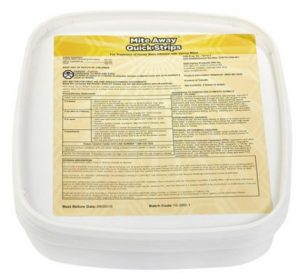
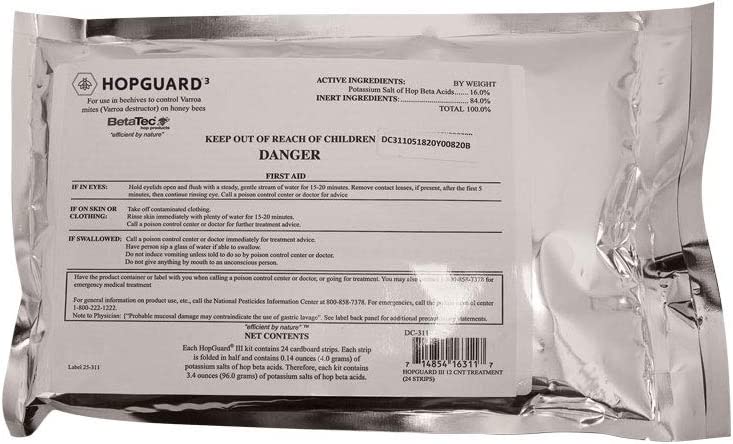
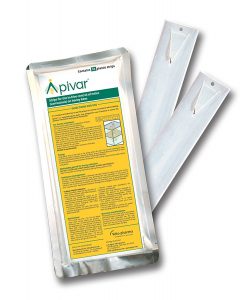
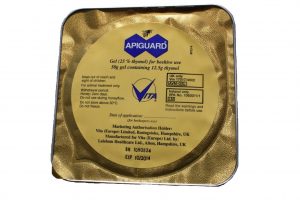
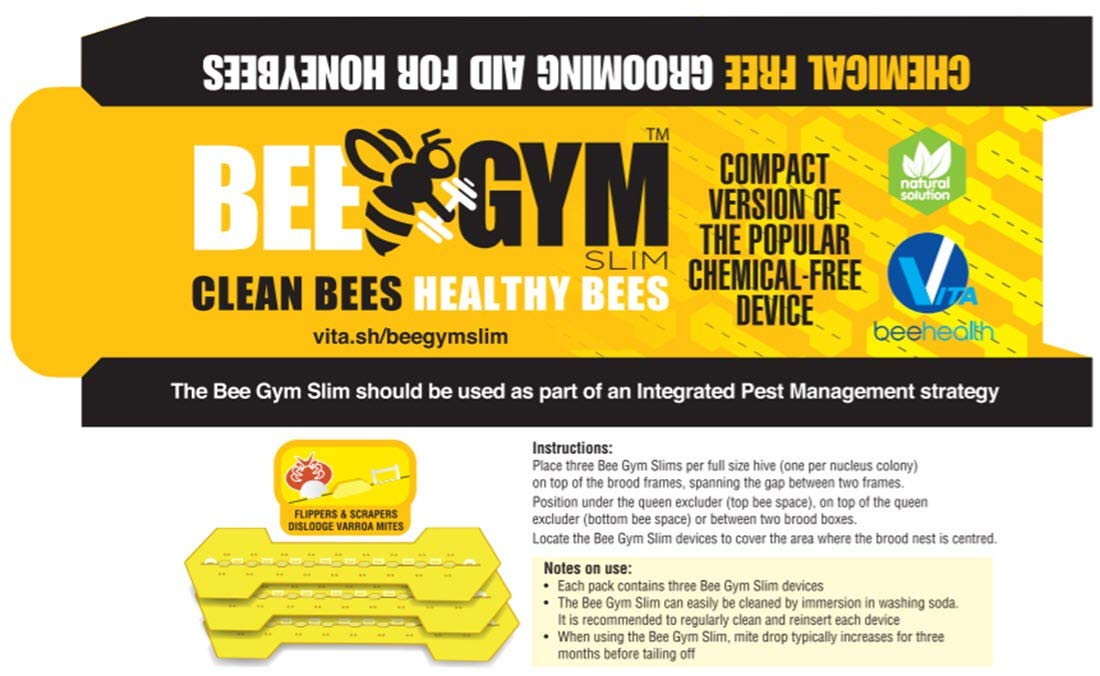
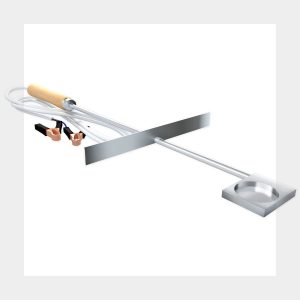
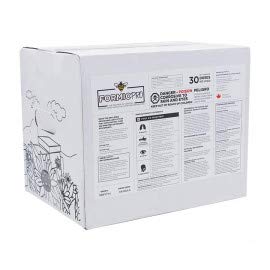
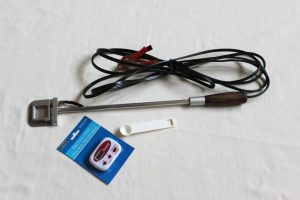
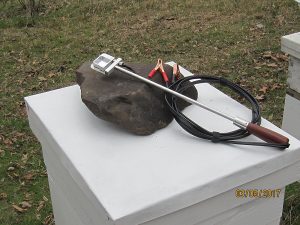
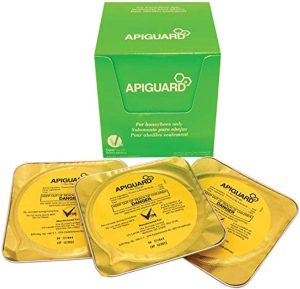
Is the use of mineral oil in a propane fogger effective against varroa mites?
Hi Don,
Indeed, mineral oil applied via a fogger can be effective against varroa mites.
Do more research on Mineral oil and Verroa. This month, July 2019, in American Bee Journal that question is answered in the The Classroom Q & A (p.756). They show scientific evidence to the contrary.
Hello. Is there an online link to that?
No, it’s in the July issue and I only have a hard copy. This is a great magazine and well worth subscribing. They even have digital subscriptions available.
Ok great! Will check it out, thanks.
We use mineral oil in an Insect Fogger with great success. Put 20 drops of wintergreen in 16 oz of mineral oil blow fog into hive entrance for 15 to 20 seconds until fog starts to come out lid. Treatment is complete & you will get a 50% or better kill rate. Inexpensive effective treatment.
Hi Harvs, thanks for sharing.
Essential oils can indeed play a major role in mitigating against mites. We wrote an article about how essential oils can be used for mite control and you can check it out by clicking here.
Which of these treatments will render honey not fit for humans? How long does it take to clear out of the hive so it is fit for those that contaminate the honey? I have read some will harvest the honey and feed it back to the bees, doesn’t this just put the chemicals back in the hive? How safe is the next round of honey?
Hello.
The following treatments in particular should have the honey supers removed during application:
– Mann Lake DC-799 Apivar (supers need to be removed for 6 weeks)
– Apiguard (supers need to be removed for 6 weeks)
The other methods, particularly those that utilize oxalic acid, are considered safe for use with honey. Of course, treatments should not be applied during the honey harvesting period.
Hi apegard us to iran very good
I am starting to winter my bees. I just noticed last week a bee with a mite on her back, and some crawling in front of the hives. Granted most of them are drones in exile for the winter. Can I treat my bees for mites over the winter?
P.S. I would appreciate any suggestions on best wintering practices. I have had little success, especially with last year’s hard winter (Omaha).
Hi, you can check out our article on helpfuls tips for beekeeping in winter: https://beekeepclub.com/getting-started-beekeeping/9-helpful-tips-beekeeping-winter/
Also, I’d not recommend treating the hives over the winter, at least with not any chemical methods. Check out our article on homemade mite treatments for some suggestions: https://beekeepclub.com/homemade-varroa-mite-treatment/
what is the highest ambient temp.I can vaporize my bees with oxlic acid
Hello Vincent,
At about 315 °F (157 °C), oxalic acid will start to sublime into a vapor. It must never pass 370 °F (189 °C).
I’ve seen the temperature issue for oxalic acid raised before but I’m obviously missing something. If the hive is at STP, I don’t think there’s a way for the oxalic to ever get above the sublimation temperature. Latent heat of vaporization would mean that the temperature of the substance won’t rise above the sublimation point regardless of how hot you try to make it, assuming ambient temperature and atmospheric pressure are constant. And in normal hive conditions where a human could still live you couldn’t fiddle with either to have an appreciable effect on the temperature of the oxalic.
Hello.I m shalva from georgia.In region have been brought bad preparates against varroa.my friends bees meni have dead.i wont to help them and i wont your advise to me,what is the more strong varroa mite tratment.i ll order for spring.thank you. shalva urushadze.
Hello, you may consider using an oxalic acid vaporizer on your beehives.
[…] the destruction of Varroa mites is more widely covered in beekeeping, tracheal mites have received a lesser share of the spotlight. […]
[…] bees do not produce honey or wax. They are immune from Varroa and Acarine mites that attack honey bees. Mason bees are so called due to their preference in using […]
[…] all beekeeping regions of the world. As such, it has become a significant disease in the USA. Varroa mites also contribute to the spread of this disease. Nurse bees infected by the virus are the biggest […]
[…] via […]
[…] Varroa mites is done using both commercial and homemade products. It is important to ensure you do not incur losses due to Varroa mite […]
[…] to get weak and deformities to appear in bees. Various treatments are applied by beekeepers to keep Varroa mites in check. Formic acid is one such treatment used and it can be applied in various forms. You can make your […]
Hi.i have amitraz 12.5% how i can use it to kill varroa please
Hello. You can check out this article for more information: https://beekeepclub.com/taktic-bee-treatment-for-varroa-mites/
[…] application greatly compromises colony health. Furthermore, it is advisable to rotate your Varroa mite control methods. You can have oxalic acid vaporization as one method and another 1-2 methods. Rotation ensures that […]
[…] parasitic mite referred to as Varroa compromise the heath of the honey bee colony. The parasites suppress the nutrient levels, cripple […]
[…] spared either. Invasive pests are also taking their toll on honey bee colonies. Such pests include mites and hive beetles. They have applied so much pressure on honey bees that they are causing […]
[…] parasitic mite referred to as Varroa compromise the heath of the honey bee colony. The parasites suppress the nutrient levels, cripple […]
[…] The Amitraz Plus Strips are an effective solution to combat varroa mites. […]
[…] The bee louse is an insect of the fly family. It is not recognized as a true parasite of honeybees but nonetheless, it is found in honeybee colonies quite often. The Diptera family of the bee louse has two genera and seven species in it. Bee lice are unusual flies due to their winglessness. They are not mites or lice as many would think. A bee louse is very small. Its size is nearly the same as a Varroa mite. […]
[…] various essential oils. ApiHerb is made and sold by the company that also makes Apilife Var for the control of Varroa mites in honey bee […]